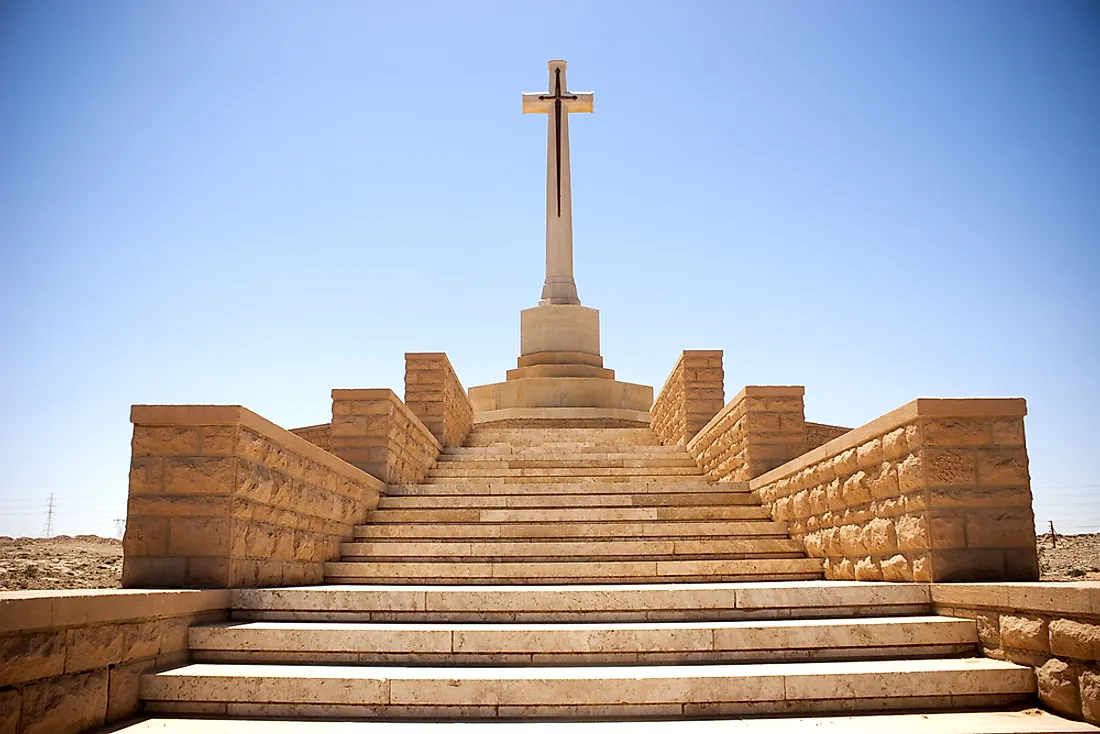Battle of Gazala - Important Battles Throughout History

5. Background
The Battle of the Gazala was fought between the Axis troops and the Allied forces during World War II. This battle took place in Tobruk, Libya from May 22nd to June 21st, 1942. The Axis force was led by Erwin Rommel while General Claude Auchinleck commanded the Allied forces. The Axis consisted of the Germans and the Italians and the Allied consisted of British, South African, Indian and Free French. In the year 1941, British Army relieved Tobruk and drove the Axis forces that were in Cyrenaica to El Agheila. Rommel had to tactically send three of his columns to offensively attack the Eight Army leading to the recapture of Benghazi and Timimi. The British had to retreat to a line from Gazala to Bir Hakeim. At this point, the British, Army concentrated and found the force to fight back.
4. Makeup of the Forces
The Axis troops were made up of German and the Italian units. These troops were commanded by General Erwin Rommel. These troops also had the air attackers in different divisions. There was the Italian 132 Arrmoured Division, the 21st Panzer Division and the 15th Panzer Division. The Allied forces were made up of the British, Indian, South African and Free- French units. This force was commanded by General Claude Auchinleck. The major unit of this force was the Eighth Army.
3. Description of the Engagement
The Italian X and the XII corps attacked the central Gazala position. Included in this attack also were the XX mobile and the Afrika Corps. Rommel led his Army in flanking the Allied from the south and used the British minefields to protect his Axis lines. The 90th Light attacked the Motorist Brigade forcing it to withdraw to Bir El Gubi. The axis advanced to El Adem and captured the commander of the 7th Armoured Division. The 1st Free- French brigade defended the Bir Hakeim box. The Italian battalion advanced in full speed and found themselves in the French positions that launched attacks that led to their failure. The Axis was reinforced with more combat and was able to overrun the defenses; this made the French Troops withdraw. On the June 13th referred to as the Black Saturday, the Knightsbridge box was surrounded and abandoned by its guards that night. The 21st Panzer Division then attacked Rigel Ridge where the South African troops tried to counter and were defeated leading to the Germans capturing Allied prisoners. Auchinleck then ordered the withdrawal of the Eighth Army from Gazala line. The Allied forces did not hold anymore to Tobruk and had to withdraw.
2. Outcome
Through the capture of Tobruk, the Axis obtained a good sum of British Supplies. Rommel was promoted to be a Field-Marshal by Hitler. This meant Rommel became the youngest German to ever achieve the rank.
Ritchie was dismissed by Auchinleck as he instead commanded the Eighth Army in the Battle of El Alamein. The Eighth Army suffered most of the losses as they lost over 50,000 men and about 35,000 captured and wounded. Axis losses were about 3,360 individuals.
1. Historical Significance and Legacy
The victory conquered by the Germans led to the promotion of Rommel to the rank of Field-Marshal. Winston Churchill termed the fall of Tobruk as a disgrace since it had affected the British Army’s reputation. The fact that Rommel was chosen and was not from the Nazi party shows how valued he was by Hitler.
The Battle of Gazala has led to the worldwide recognition of Rommel as a good fighter and tactician. This is because of the way he managed to conquer the British Army.











